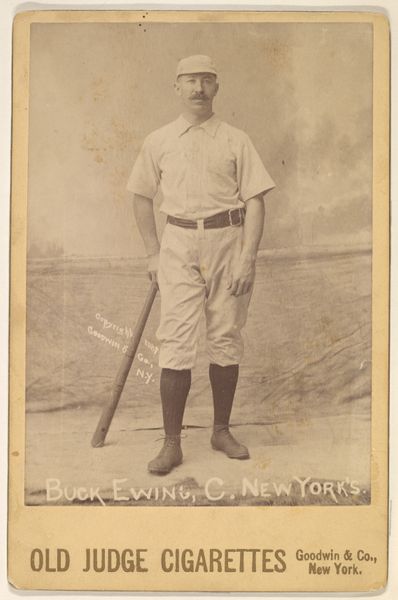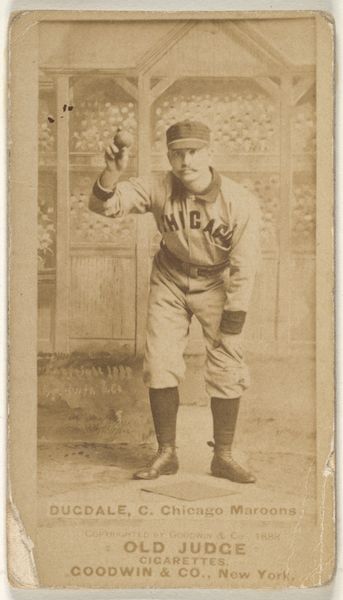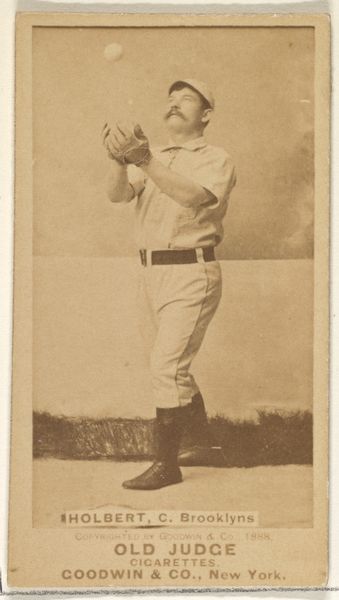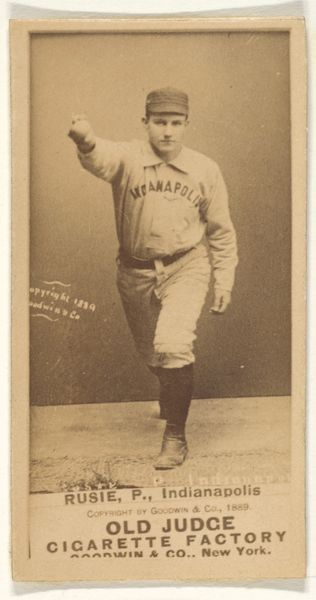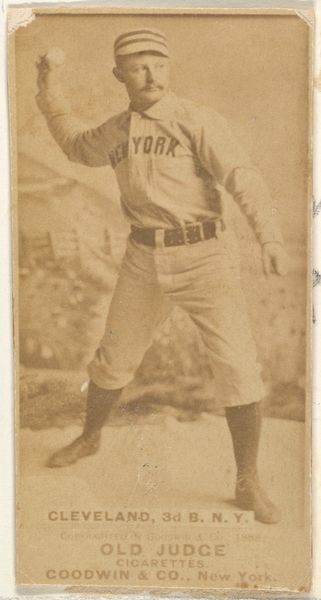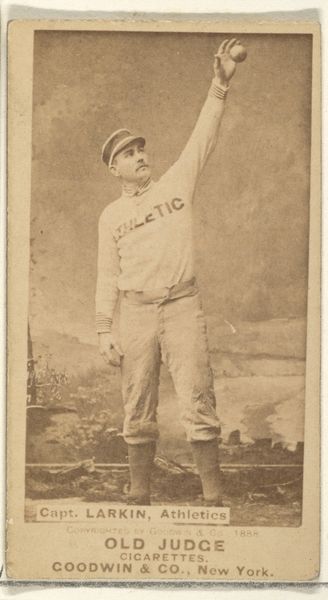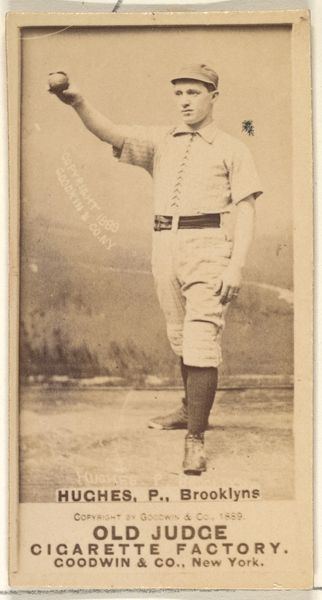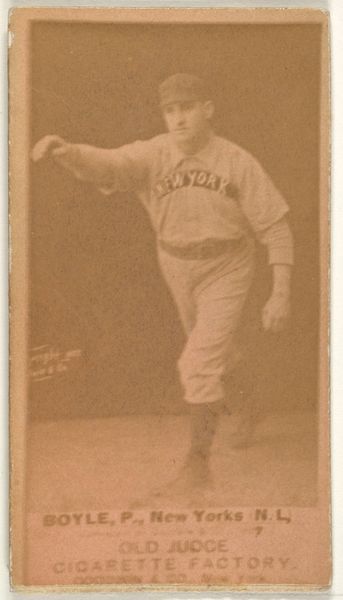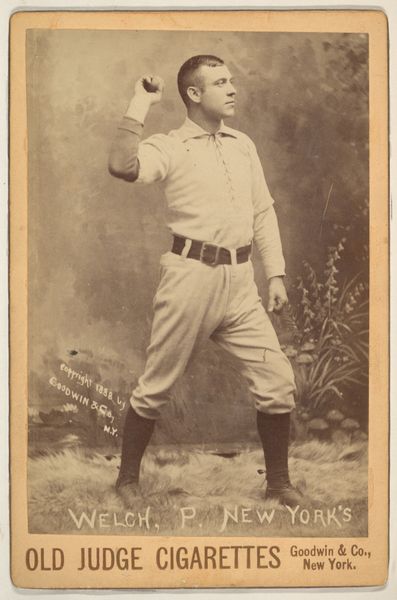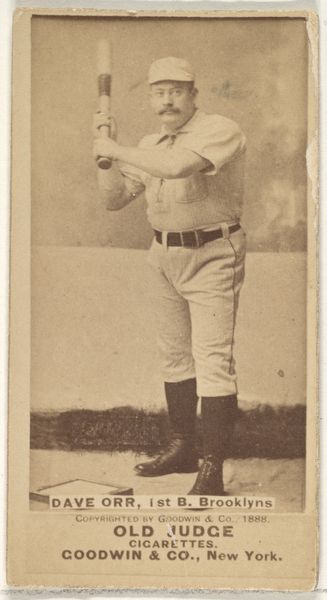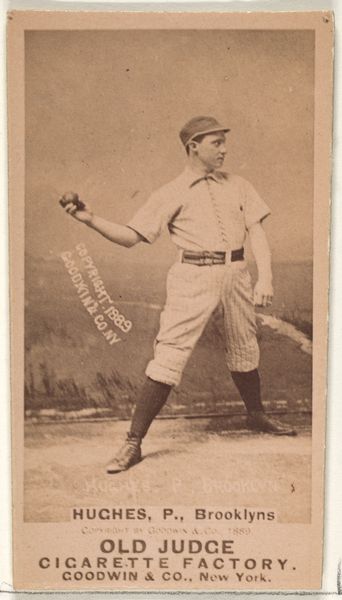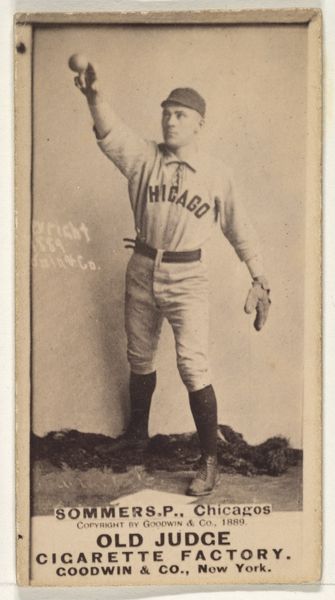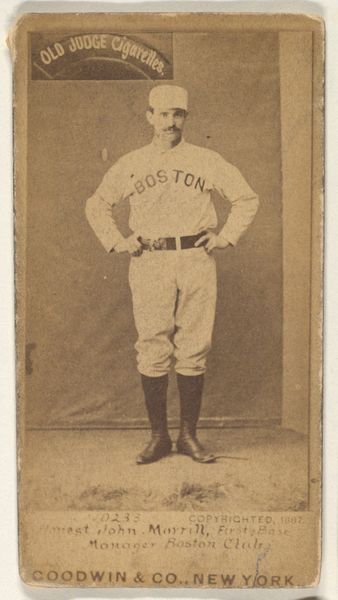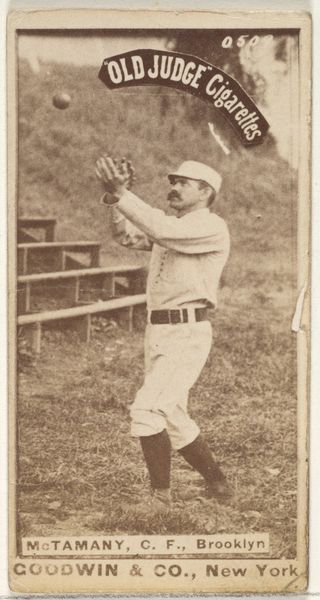
La Porte, New York, American League, from the White Border series (T206) for the American Tobacco Company 1909 - 1911
0:00
0:00
drawing, print, paper, photography
#
portrait
#
drawing
# print
#
caricature
#
baseball
#
paper
#
photography
#
men
#
athlete
#
portrait art
Dimensions: Sheet: 2 5/8 x 1 7/16 in. (6.7 x 3.7 cm)
Copyright: Public Domain
Editor: This is "La Porte, New York, American League," a baseball card made by the American Tobacco Company between 1909 and 1911. It's a small, mass-produced piece of paper, but there’s something striking about the formal portrait. It feels so posed, and yet, somehow very candid. What's your take? Curator: This card is a fantastic lens through which to examine the intersections of early 20th-century commercialism, leisure, and the construction of celebrity. It's more than just a baseball card; it reflects the rise of consumer culture and how it shapes ideas around masculinity and identity. Do you notice how the idealized portrayal contrasts with the gritty reality of working-class athletes? Editor: I hadn’t really thought about that contrast, but now that you mention it, the man’s slightly roughened complexion seems almost at odds with the crispness of the uniform and idealized pose. It's like a tension between reality and representation. Curator: Exactly. These cards helped to craft narratives around athleticism and American ideals. By linking these heroic figures with products like tobacco, there's an implicit endorsement, creating aspiration for the consumer. The companies were really selling not just a product but a lifestyle. Do you think this sort of constructed imagery impacted social perceptions about professional athletes? Editor: It must have. It's a reminder of how images can shape perceptions and how advertising subtly molds cultural values. I had considered it a vintage object, but you’ve really shed light on its complicated cultural work. Curator: And understanding that work is vital if we’re to truly understand our present cultural landscape. Thinking critically about historical intersections illuminates ongoing dialogues. Editor: Thanks, this makes me consider how such everyday items are imbued with so much complex meaning.
Comments
No comments
Be the first to comment and join the conversation on the ultimate creative platform.
